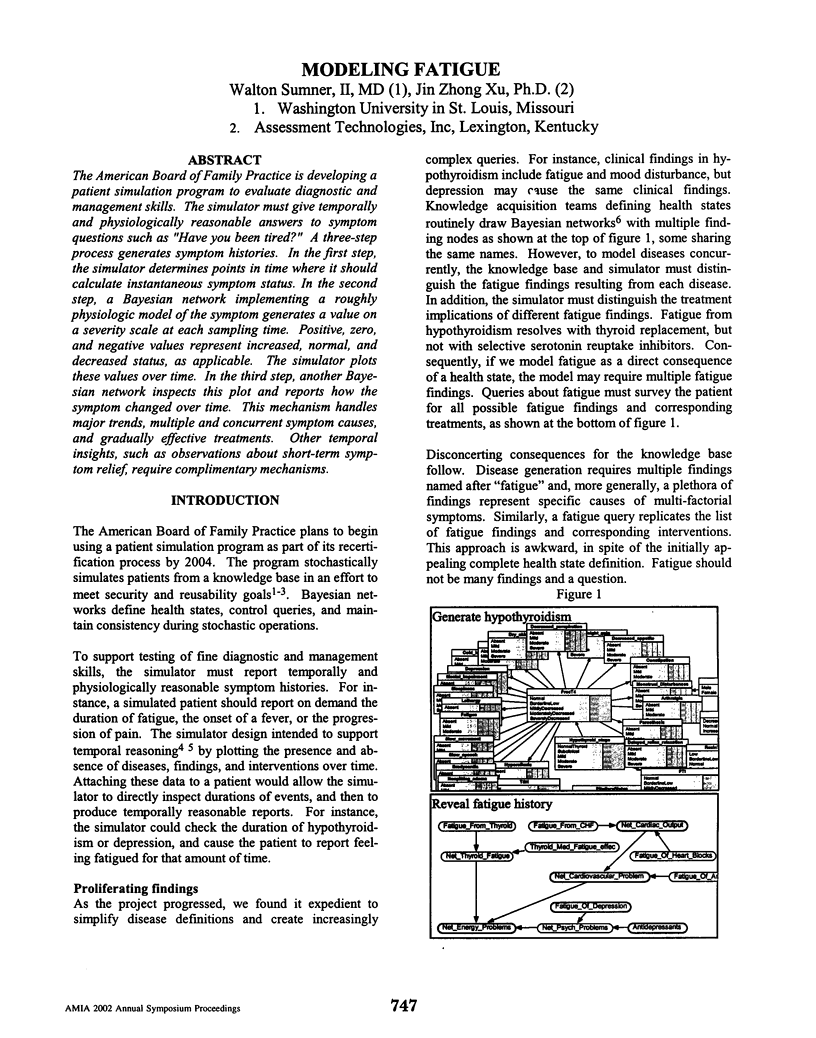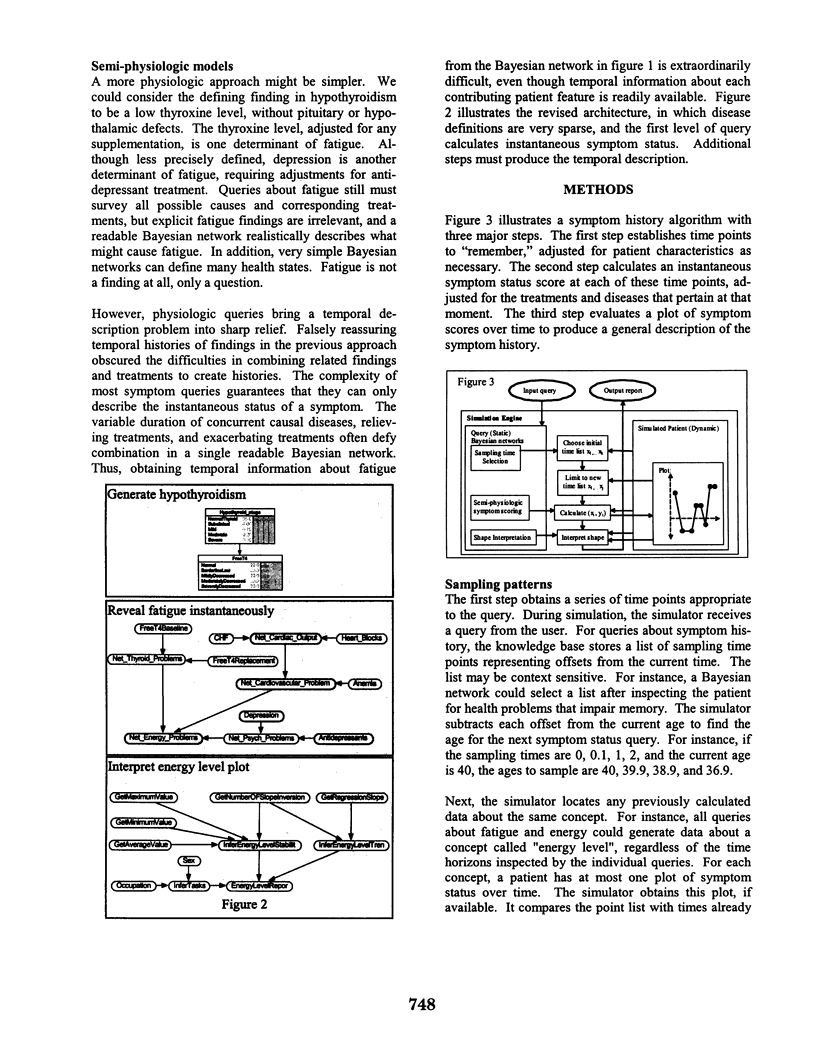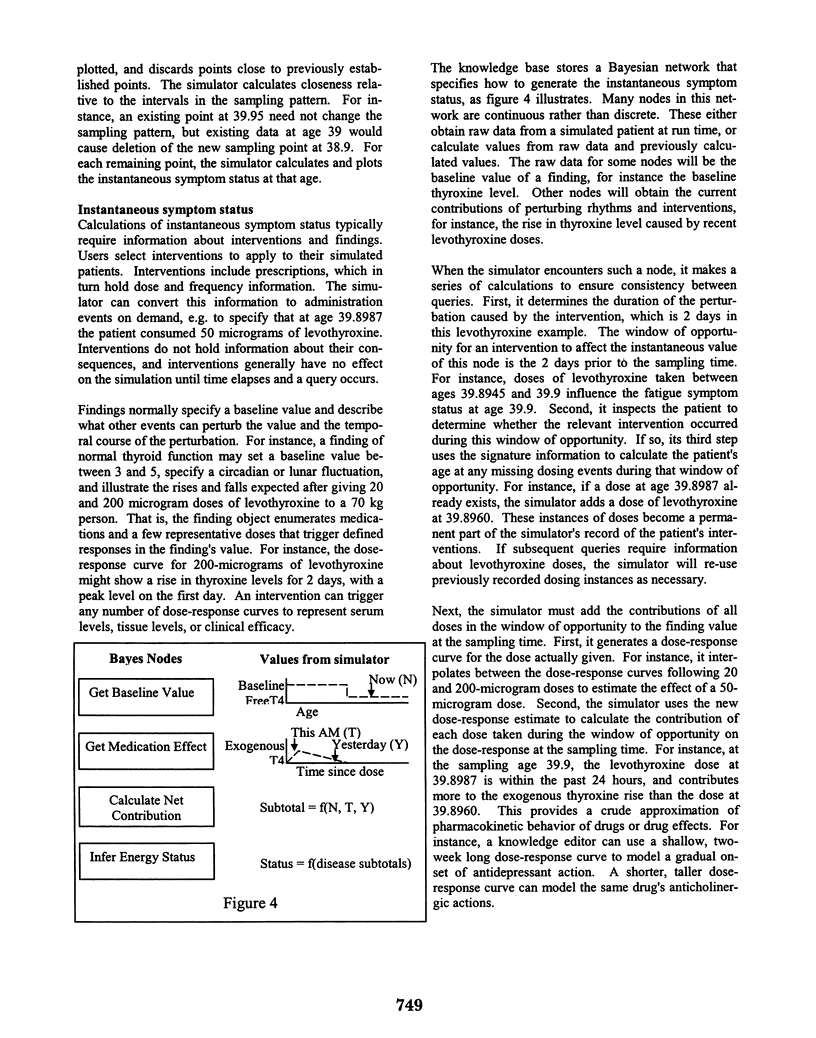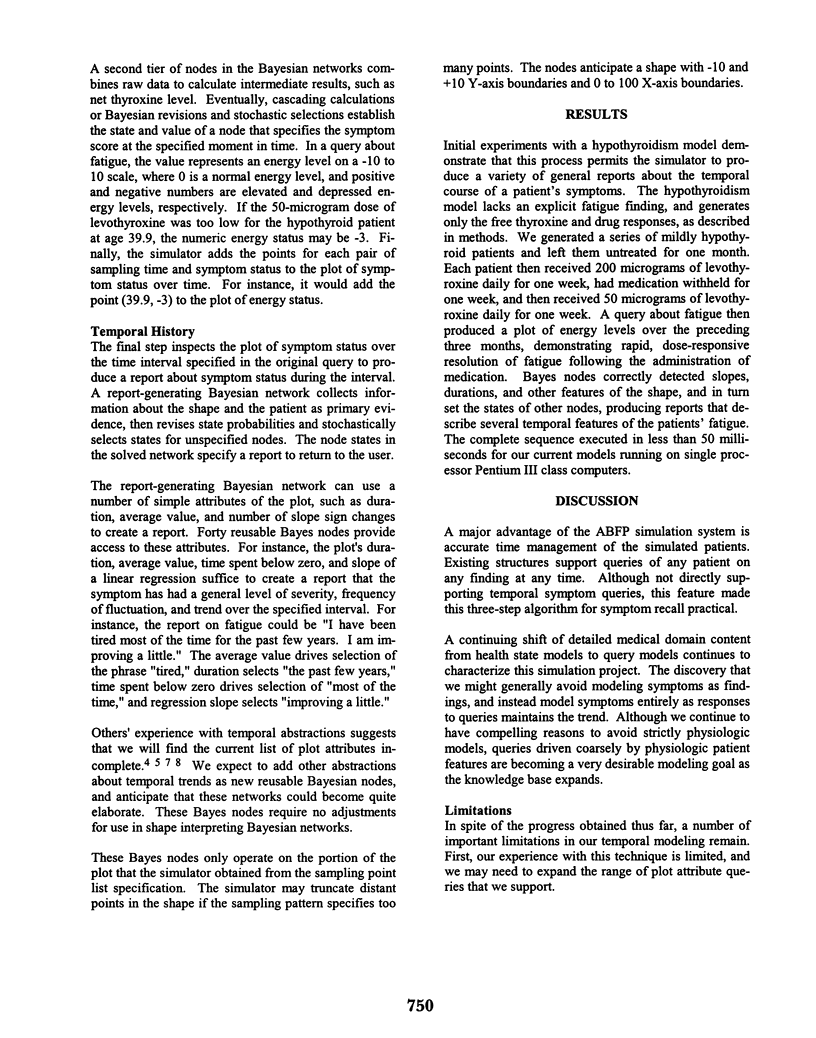Abstract
The American Board of Family Practice is developing a patient simulation program to evaluate diagnostic and management skills. The simulator must give temporally and physiologically reasonable answers to symptom questions such as "Have you been tired?" A three-step process generates symptom histories. In the first step, the simulator determines points in time where it should calculate instantaneous symptom status. In the second step, a Bayesian network implementing a roughly physiologic model of the symptom generates a value on a severity scale at each sampling time. Positive, zero, and negative values represent increased, normal, and decreased status, as applicable. The simulator plots these values over time. In the third step, another Bayesian network inspects this plot and reports how the symptom changed over time. This mechanism handles major trends, multiple and concurrent symptom causes, and gradually effective treatments. Other temporal insights, such as observations about short-term symptom relief, require complimentary mechanisms.
Full text
PDF




Selected References
These references are in PubMed. This may not be the complete list of references from this article.
- Chakravarty S., Shahar Y. Acquisition and analysis of repeating patterns in time-oriented clinical data. Methods Inf Med. 2001;40(5):410–420. [PubMed] [Google Scholar]
- Shahar Y., Chen H., Stites D. P., Basso L. V., Kaizer H., Wilson D. M., Musen M. A. Semi-automated entry of clinical temporal-abstraction knowledge. J Am Med Inform Assoc. 1999 Nov-Dec;6(6):494–511. doi: 10.1136/jamia.1999.0060494. [DOI] [PMC free article] [PubMed] [Google Scholar]
- Shahar Y., Musen M. A. A temporal-abstraction system for patient monitoring. Proc Annu Symp Comput Appl Med Care. 1992:121–127. [PMC free article] [PubMed] [Google Scholar]
- Shahar Y., Tu S. W., Musen M. A. Temporal-abstraction mechanisms in management of clinical protocols. Proc Annu Symp Comput Appl Med Care. 1991:629–633. [PMC free article] [PubMed] [Google Scholar]
- Sumner W., 2nd, Truszczynski M., Marek V. W. A formal model of family medicine. J Am Board Fam Pract. 1996 Jan-Feb;9(1):41–52. [PubMed] [Google Scholar]
- Sumner W., 2nd, Truszczynski M., Marek V. W. Simulating patients with Parallel Health State Networks. Proc AMIA Symp. 1998:438–442. [PMC free article] [PubMed] [Google Scholar]
- Sumner W., Hagen M. D., Rovinelli R. The item generation methodology of an empiric simulation project. Adv Health Sci Educ Theory Pract. 1999;4(1):49–66. doi: 10.1023/A:1009845802726. [DOI] [PubMed] [Google Scholar]


